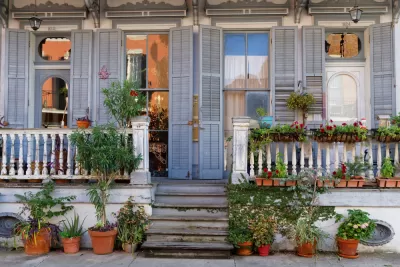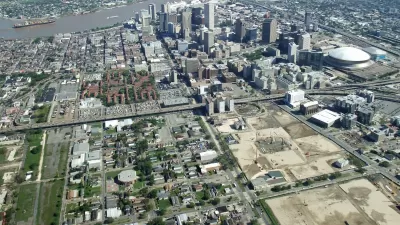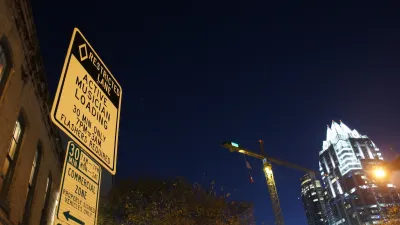The housing initiatives developed after Hurricane Katrina teach valuable lessons for post-pandemic affordable housing production.

"Skyrocketing rents over the last decade combined with housing developments geared toward the wealthy have pushed musicians, artists and hospitality and service industry workers further and further from their jobs in the French Quarter, CBD and Marigny" neighborhoods of New Orleans, writes Sarah Ravits. "And now, the COVID-19 pandemic and looming evictions once again have thousands of New Orleanians desperate and frustrated."
But 16 years after Hurricane Katrina devastated the city, "New Orleans has something of a road map to follow" when it comes to creating more affordable housing. Ravits highlights examples such as Musicians' Village, a Habitat for Humanity project that built housing for 70 residents who lost their homes in Katrina, as proof that "it’s possible to create quality, long-term affordable housing for the artists and workers who are the backbone of New Orleans."
Casius Pealer, director of Tulane’s Master of Sustainable Real Estate Development program, says the biggest lesson from post-Katrina housing "is similar to the housing lesson we have learned in the pandemic: Housing is infrastructure." Musicians' Village "was a unique partnership between private funders, nonprofits and government which were able to come together in a remarkably short period of time to solve an enormous problem."
"As housing continued to be a challenge, other projects took form in the years immediately following Katrina. These housing initiatives were designed to help subsidize and support the city’s creatives and low- to medium-income earners." HousingNOLA’s Executive Director Andreanecia Morris "sees New Orleans as a place that could set a national standard on how to get its working class into reliable houses. The city’s previous experience with rebuilding and some of its post-Katrina developments could be inspirational to other struggling cities who are also experiencing a housing crisis."
FULL STORY: Model homes: Sixteen years on it’s time to learn lessons from post-Katrina housing initiatives

Study: Maui’s Plan to Convert Vacation Rentals to Long-Term Housing Could Cause Nearly $1 Billion Economic Loss
The plan would reduce visitor accommodation by 25,% resulting in 1,900 jobs lost.

North Texas Transit Leaders Tout Benefits of TOD for Growing Region
At a summit focused on transit-oriented development, policymakers discussed how North Texas’ expanded light rail system can serve as a tool for economic growth.

Why Should We Subsidize Public Transportation?
Many public transit agencies face financial stress due to rising costs, declining fare revenue, and declining subsidies. Transit advocates must provide a strong business case for increasing public transit funding.

Alabama: Trump Terminates Settlements for Black Communities Harmed By Raw Sewage
Trump deemed the landmark civil rights agreement “illegal DEI and environmental justice policy.”

Dear Tesla Driver: “It’s not You, It’s Him.”
Amidst a booming bumper sticker industry, one writer offers solace to those asking, “Does this car make me look fascist?”

A Visual Celebration of Manhattan’s Chinatown Elder Community, Through Food
Lanterns, cafeteria trays, and community connection take center stage in this stunning photo essay.
Urban Design for Planners 1: Software Tools
This six-course series explores essential urban design concepts using open source software and equips planners with the tools they need to participate fully in the urban design process.
Planning for Universal Design
Learn the tools for implementing Universal Design in planning regulations.
City of Santa Clarita
Ascent Environmental
Institute for Housing and Urban Development Studies (IHS)
City of Grandview
Harvard GSD Executive Education
Toledo-Lucas County Plan Commissions
Salt Lake City
NYU Wagner Graduate School of Public Service




























